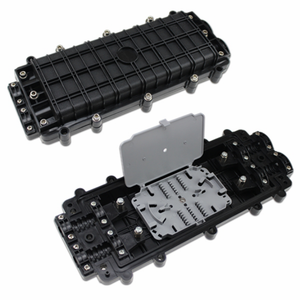-
 Encontrar enMiembros
Encontrar enMiembros Encontrar enVideos
Encontrar enVideos Encontrar enCanales
Encontrar enCanales
This website uses cookies to ensure you get the best experience on our website.
To learn more about our privacy policy haga clic aquíPreferencia de privacidad
-
- Última actualización 13 de enero de 2019 0 comentarios, 459 vistas, 0 likes
- Yuyao, 宁波市浙江省中国 - Obtener las direcciones
More from greentelftth gane
More in Politics
Related Blogs
Archivo
Common Fiber Closure Tester
Cuerpo
Common Fiber Closure Tester
Fiber testing must be performed during the installation of the Fiber Closure connection. Without a high-quality fiber optic tester, accurate test results cannot be obtained. There are various fiber optic testers and other fiber optic installation tools on the market. Today, this article focuses on several common types of fiber optic testers.
Fiber optic testers cannot be ignored in terms of fiber optic installation and termination. After the cable is installed and terminated, it is time to test it. But what should be tested with a fiber optic tester? Here are some common parameters that need to be tested.
Power measurement: The power in a fiber optic system is similar to the voltage in a circuit. It is very important to have moderate power. Because too little power may not distinguish between signals and noise, and too much power can cause errors, measuring power is important.
Loss test: The loss test is the difference between the power coupled to the cable at the transmitter end and the power at the receiver. In fiber optic systems, many things can cause losses such as dust, connectors, and breakage.
Optical Return Loss: Optical return loss is the total accumulated optical power that is reflected back from the entire optical range back to the source. It includes backscattered light from the fiber itself and reflected light from all connectors and terminals. Typically, the optical return loss is expressed in decibels (dB). And high levels of optical return loss will affect the performance of the transmission system.
In addition, some optical testers are also available for troubleshooting.
Know what should be tested in the fiber test. Now, it's time to learn about fiber optic testers and installation tools. In general, common types of fiber optic test instruments are visual fault locators (VFLs), OTDRs (optical time domain reflectometers), optical power meters, optical multimeters, and the like. The following is a brief introduction to the general type of fiber tester.
The information about Fiber Closure: https://www.greentelftth.com/basic-information-about-fiber-patch-panel.html
Fotos
Mapa
-
Ubicaciones en MyWorldGo
Información sobre la ubicación
- Ubicación: Yuyao, 宁波市浙江省中国 - Obtener las direcciones
- Dirección formateada: 中国浙江省宁波市余姚市
- Dirección: 宁波市
- Estado: 浙江省
- País: 中国










Comentarios